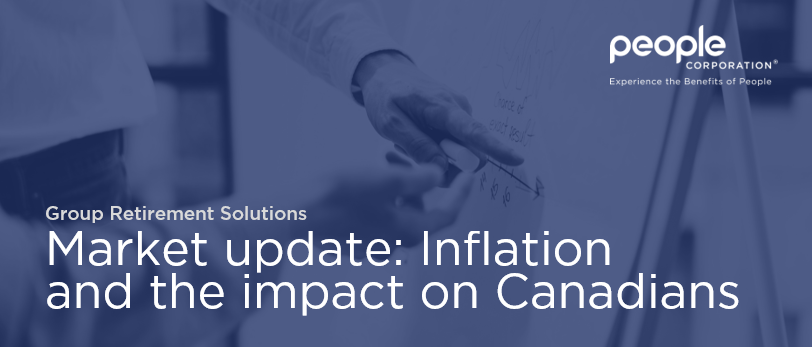Inflation is the most discussed topic for retirement savers and investors today.
Inflation measures the rise in the cost of living as indicated by the change in price of a set basket of goods over a twelve-month period. Examples of goods that experts compare over time are food, shelter, household operations, furnishings, clothing, transportation, healthcare, and personal care.
After decades of inflation averaging 2% per year, 2022 saw the highest level since 1983, with average prices increase to 8.1% at the highest point in 2022. This means if you spent $100 on a basket of goods in 2021, you’d pay $108.10 for those exact same items in June 2022. Fortunately, we began to see the average inflation rate drop to 6.3% by December 2022.
Why is inflation so high?
Inflation rises when there’s a higher demand for goods than the economy can supply. This year, it was triggered by five main factors:
- In response to the COVID-19 pandemic, governments lowered interest rates to near zero, and implemented programs to subsidize Canadians. The intent was to kick-start the Canadian economy after consumer and business spending had stalled, but the low interest rates and subsidies not only offset the pause, but boosted more spending, creating increased demand for goods.
- After months of lockdown, consumers started spending as restrictions lifted. This pent-up demand combined with a limited global supply caused price increases across the board.
- Pandemic-related supply chain issues, factory and port closures, and vacancies in the workplace hadn’t been resolved in time to meet the increased demand for goods and services. This reduced the total supply of goods on shelves and online, driving prices higher.
- Low unemployment led employers to entice workers with higher wages. Higher wages lead to more spending and a further increase in prices.
- The fallout of Russia’s invasion of Ukraine negatively impacted production of oil, natural gas, and wheat from that region, creating additional shortages that increased prices for those commodities.
The good news is that the economic fallout from the pandemic was minimized, but the resulting economic environment has increased demand faster than supply could adjust. When demand exceeds supply, prices increase. This is where we are today.
Why is stock market down?
Much like the economy, the stock market benefitted from pandemic-related government support. Low interest rates fuelled the impulse to spend, propelling demand for investment in stocks. At the time, investors dismissed the risk because the environment was supportive, and most wanted to capture the positive returns.
However, when the policy was reversed to curb spending by introducing higher interest rates and less liquidity, the pendulum swung in the other direction back toward less risky investments like cash, bonds, and gold. Stocks were sold off in waves as investors adjusted to the new risks of a less supportive environment. Adding the geo-political uncertainty of Russia invading Ukraine, it’s clear that the course was set for a major market correction.
What’s next?
The primary objectives of central banks are to maintain a healthy level of employment and keep inflation at reasonable levels. One way to lower inflation is to increase interest rates. Just as lower interest rates and higher spending pushed markets up over the past several years, higher interest rates and lower spending are expected to pull markets down until a new equilibrium is reached.
The intent of the higher interest rates is to move demand and supply closer to each other, reducing the high inflation figure we’ve seen this past year.
The Bank of Canada increased the policy rate by 4% in 2022. That is significant considering the policy rate held steady at 0.25% in 2021 without change. It’s fair to say that the fight against inflation is on and we’re already seeing its impact on the stock market, housing prices and recently a drop in the overall inflation rate.
It’ll take time before inflation peaks and ultimately returns to the central banks’ target between 1% and 3% annually. There’s a chance 4% becomes the norm but only time will tell.
Key takeaway
Although many view the increase in interest rates and decrease in investment returns as a dark period, it’s needed to reset the economy to healthier, more manageable levels. Historically, there’s always light at the end of the tunnel as we pause, reset, and move toward brighter days. No one knows how long this reset will take, but patience is the key to successful outcomes.
If you’re worried about your finances, speak to a financial advisor to confirm you’re on track to meet your goals and to ensure your investments match your risk tolerance.
Written by:
Chris Walker, VP Group Retirement Solutions
Kevin Sorhaitz, VP Actuarial & Investment Consulting
